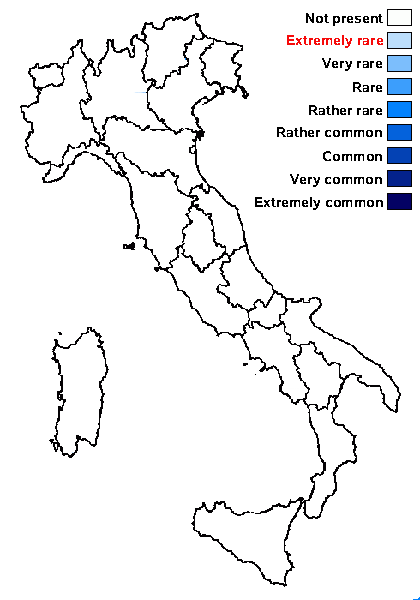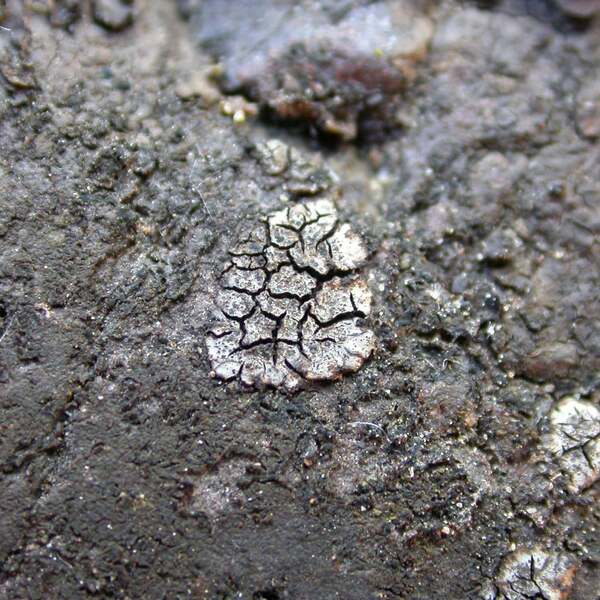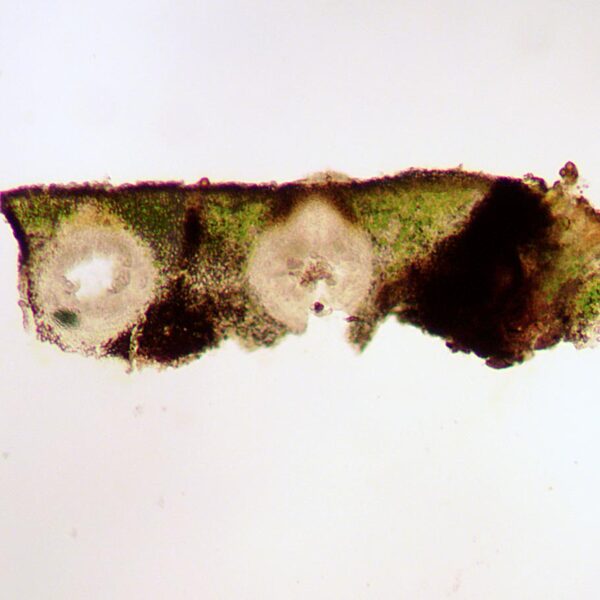Placopyrenium cinereoatratum (Degel.) Orange
Lichenologist, 41: 132, 2009. Basionym: Verrucaria cinereoatrata Degel. - Svensk Bot. Tidskr., 39: 18, 1945
Synonyms:
Distribution:
Description: Thallus crustose to subsquamulose, well-delimited, 0.2-0.6 mm thick, rimose-areolate, the areoles angular, constricted at base, 0.5-1.2 mm wide, flat to slightly convex, pale grey to mid-brown with black sides, faintly to distinctly pruinose, rarely divided by a few dark lines; when growing on Staurothele fissa the thallus is thinner, cracked and without a distinct margin. Cortex poorly differentiated, paraplectenchymatous, the cell walls often with a brown pigment, with an up to 12 μm thick but sometimes poorly developed epinecral layer; photobiont cells arranged irregularly or in weakly defined columns; lower parts of medulla (in section) with a dense brown pigment. Perithecia immersed, 0.15-0.3 mm across, the apex often visible as a small brown dot, more rarely appearing as a flat or slightly projecting black disc. Involucrellum absent; exciple brown at apex, colourless in lower part; hamathecium of periphyses and periphysoids, interascal filaments absent; hymenial gel hemiamyloid. Asci 8-spored, clavate, I-, fissitunicate, the wall thickened above with an indistinct ocular chamber, Verrucaria-type. Ascospores 1-celled, hyaline (rarely faintly brown when overmature), ellipsoid, (13-)16–21(-25.5) x (5.5-)6.5-8(-9.5) μm, the perispore thin and indistinct or absent. Pycnidia immersed, the wall colourless or faintly brown near the ostiole, multilocular, Dermatocarpon--type. Conidia simple, hyaline, bacilliform, 4-6 x c. 1.2 μm. Photobiont chlorococcoid. Spot tests: cortex and medulla K-, C-, KC-, P-, UV-. Chemistry: without lichen substances. Note: a facultative parasite of Staurothele fissa on siliceous rocks along streams and lakes; widespread in Western and Northern Europe but rare, with two isolated records from the Alps, but perhaps not recognised, and therefore overlooked elsewhere; to be looked for in Italy.
Growth form: Crustose
Substrata: rocks
Photobiont: green algae other than Trentepohlia
Reproductive strategy: mainly sexual
Periodically submerged (e.g. in creeks)
paras Staurothele fissa

Predictive model
Growth form: Crustose
Substrata: rocks
Photobiont: green algae other than Trentepohlia
Reproductive strategy: mainly sexual
Periodically submerged (e.g. in creeks)
paras Staurothele fissa

Predictive model
 INDEX FUNGORUM
INDEX FUNGORUM
 GBIF
GBIF



